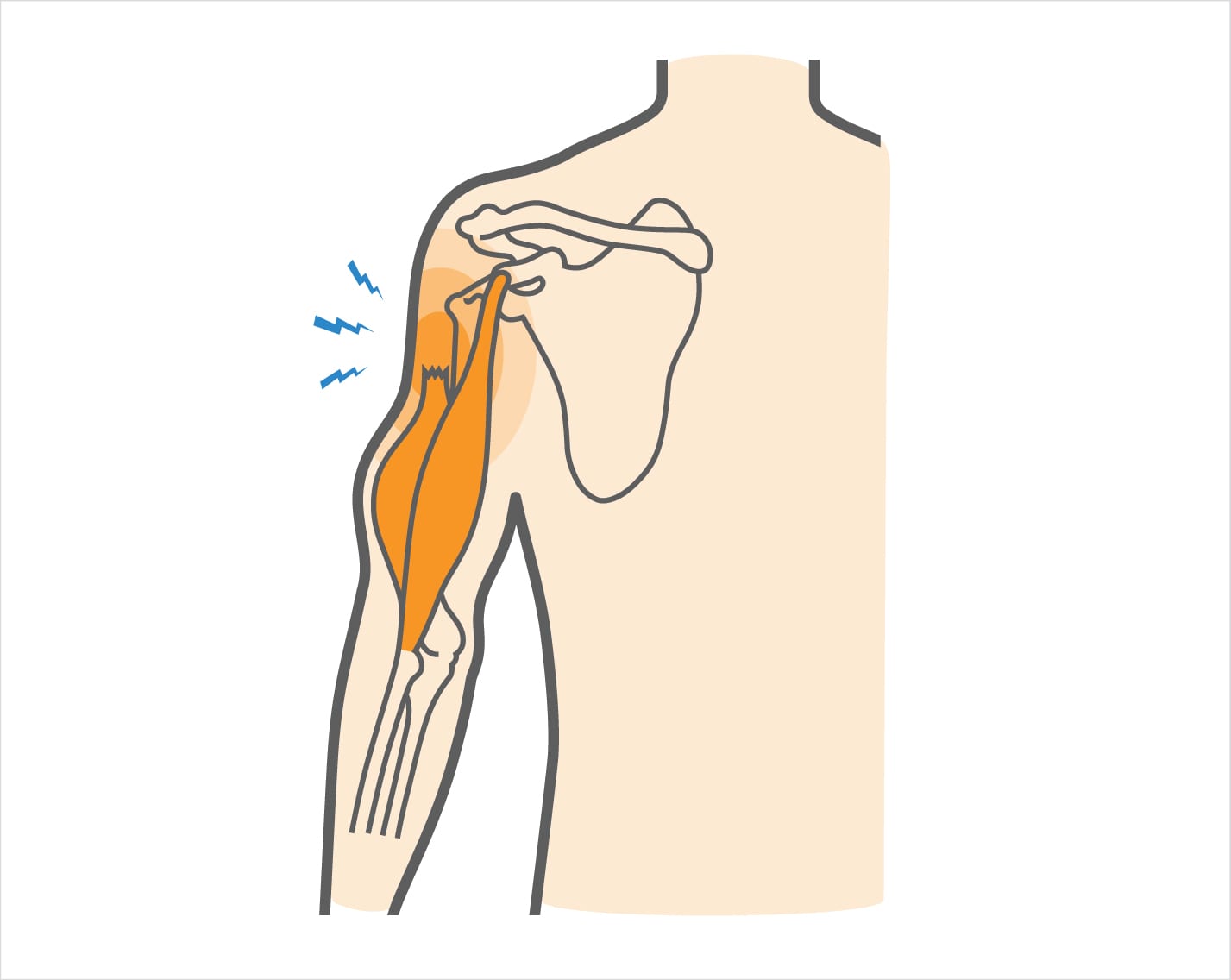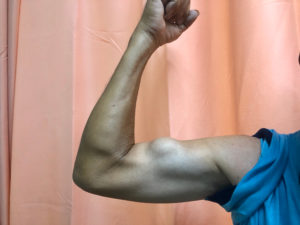The proximal (at the shoulder) biceps tendon may rupture or tear from its attachment to the bone. Almost always this involves the long head of the biceps muscle, the one that attaches to the glenoid or socket. The short head almost always remains attached.
Proximal Biceps Rupture Causes, Symptoms & Treatment
The proximal (at the shoulder) biceps tendon may rupture or tear from its attachment to the bone. Almost always, this involves the long head of the biceps muscle, the one that attaches to the glenoid or socket. The short head almost always remains attached.
Overview
Overview

What causes Proximal Biceps Rupture?
Most proximal biceps tendon ruptures occur as a result of wear and tear over time. This can be worsened by repetitive shoulder activities. Often, the same process that causes impingement and rotator cuff syndromes can lead to damage and eventually tearing of the biceps tendon. Occasionally, in young athletes, the proximal biceps can rupture due to an injury such as a fall or lifting a heavy object, leading to a torn biceps tendon
Biceps tendon rupture is common in:
- Weightlifting
Symptoms
If you have any of these symptoms, you may have a biceps tendon rupture:
- Sudden sharp pain in the front of the shoulder
- Swelling or bruising in the front of the shoulder
- A “Popeye” deformity of the biceps muscle
Often the injury is quite painful, but usually, the arm begins to feel better in a few days.

When to see a doctor
If you suspect you have a torn biceps tendon or proximal biceps rupture and you want to consider surgical repair of the tendon, you should see your physician. While surgical repair is usually not recommended, it may be appropriate in young athletes who may be bothered by mild persistent weakness in the arm. As surgical repair works best when performed soon after the injury, you should see your orthopedist as soon as you can.
In many cases, biceps ruptures are associated with rotator cuff disease. In these situations, you may rupture your biceps but still have shoulder muscle pain. In that case, you should also see your physician.
During your appointment, your doctor will examine your shoulder to see if you have a proximal biceps rupture. He/She will also look for signs of other shoulder problems.
In order to make a diagnosis, your doctor may order:
- X-ray
- Ultrasound
- MRI
Non-operative treatment
As the biceps is a unique muscle with two muscle attachments, most of the time proximal biceps muscle tears are treated nonoperatively. This is because only one tendon, the tendon of the long head actually tears, while the short head and its tendon remain attached. Athletes with these tears may have some persistent weakness, but usually it is minimal.
If you suspect you have a proximal biceps rupture, you should:
- Apply ice to the arm
- Rest the arm
- When the swelling and sudden arm pain decrease, begin a therapy program
Try these exercises to help address your condition:
Below is a PDF of the Exercise Program
Surgical Treatment
If you are a young athlete who suffers a proximal biceps tendon tear, surgical repair may be appropriate. Your physician will make a small incision over the biceps tendon and then bring it back up to the area in front of the shoulder and repair it to the bone.
Recovery
If you elect to treat the proximal biceps tendon rupture nonoperatively and you have no other shoulder problems, the recovery can be quite quick. Usually, you feel better in 3–6 weeks. If you elect to have the tendon repaired, the recovery is longer, usually 3–6 months.
GET BACK TO WHAT YOU LOVE. FASTER
Sources
Sources follow…
Frequently Asked Questions
What is the typical treatment timeline for a torn biceps tendon?
For non-surgical cases, recovery often takes 3–6 weeks. If surgical repair is performed, full recovery from a torn biceps tendon typically requires 3–6 months, including physical therapy.
Is a proximal biceps rupture always painful?
A rupture, including proximal biceps rupture, usually begins with sudden arm pain and can be quite severe. However, the pain may subside within a few days, even if the muscle remains torn.
What is the Popeye deformity and is it permanent?
The Popeye deformity refers to the bulging appearance of the biceps muscle after the tendon tears. It is permanent without surgical repair but typically causes little functional limitation.
Can I continue to lift weights with a torn biceps tendon?
You may return to lifting after healing, However, you should always consult with your physician or physical therapist before resuming strenuous activity.

